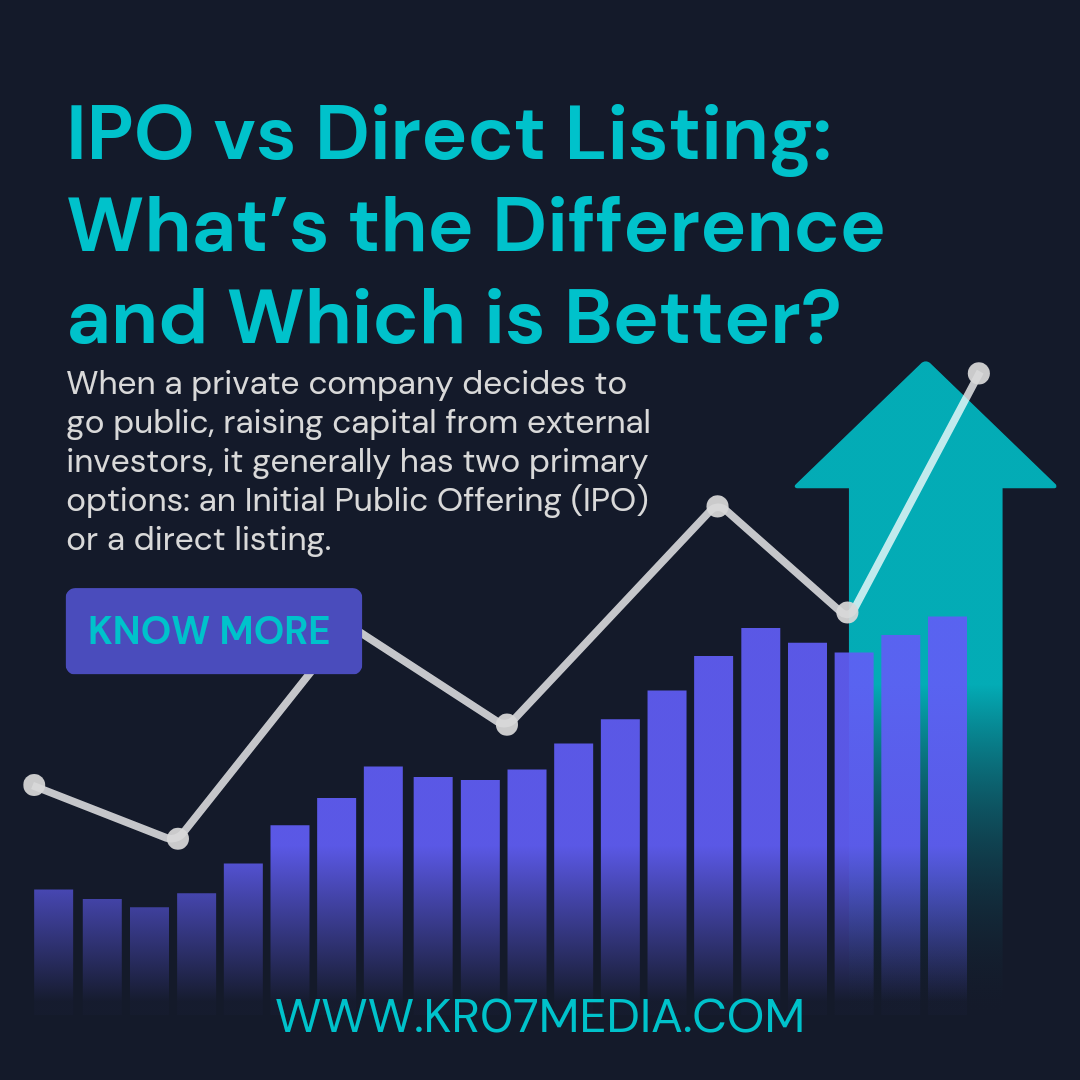When a private company decides to go public, raising capital from external investors, it generally has two primary options: an Initial Public Offering (IPO) or a direct listing. Both routes have their pros and cons, but they represent fundamentally different approaches to accessing public markets. This article will explore these differences and help you understand which method might be better suited for a particular business.
What is an IPO?
An Initial Public Offering (IPO) is the most traditional way for a company to go public. In an IPO, the company creates new shares and sells them to institutional and retail investors, raising fresh capital. A key aspect of the IPO process is that it typically involves the use of underwriters, usually investment banks, that help set the initial stock price, find buyers, and handle the regulatory and legal framework for the listing.
Steps Involved in an IPO:
1. Hiring Underwriters: Companies partner with investment banks to handle the process.
2. Regulatory Filings: The company must file extensive documents with regulatory bodies (e.g., the SEC in the U.S.), including the S-1 form.
3. Pricing the IPO: Based on market demand and financial metrics, underwriters set the IPO price.
4. Going Public: On the day of the IPO, the company’s stock begins trading on a public exchange, such as the New York Stock Exchange (NYSE) or NASDAQ.
Advantages of an IPO:
Capital Raising: IPOs are designed to raise significant capital, which companies can use to fund operations, pay down debt, or fuel expansion.
Publicity: The IPO process can bring considerable media attention, boosting the company’s visibility.
Liquidity for Early Investors: Early investors, including venture capitalists and founders, often use IPOs as an exit strategy, cashing in their shares.
Disadvantages of an IPO:
Costs: The IPO process is expensive, with high fees for legal services, underwriters, and marketing.
Dilution of Ownership: The issuance of new shares means that existing shareholders may see their ownership stake diluted.
Lock-up Period: Insiders and early investors are often restricted from selling their shares for a certain period (usually 90-180 days) after the IPO.
What is a Direct Listing?
In contrast, a Direct Listing allows a company to go public without issuing new shares or raising fresh capital. Instead, existing shareholders sell their shares directly to the public. In this method, there are no underwriters involved, and the company does not receive any proceeds from the sale of shares.
Steps Involved in a Direct Listing:
1. Registration with the Exchange: The company registers its existing shares on a public exchange.
2. No New Shares Issued: Since no new shares are created, the company avoids dilution.
3. Direct Trading: Once listed, shares are sold directly to public investors at a price determined by the open market, not through pre-determined pricing.
Advantages of a Direct Listing:
Lower Costs: Direct listings bypass the hefty fees associated with underwriters and related IPO costs.
No Dilution: Since no new shares are issued, existing shareholders don’t experience dilution.
Price Transparency: The market determines the stock price based on supply and demand, which some see as more transparent than the underwriter-determined price in an IPO.
Disadvantages of a Direct Listing:
No Capital Raised: Direct listings are not ideal for companies seeking to raise fresh capital, as no new shares are sold.
No Price Stabilization: In an IPO, underwriters typically provide price stabilization mechanisms, but there is no such safety net in a direct listing. This can lead to more volatile stock prices.
Less Media Attention: Direct listings tend to receive less media coverage compared to IPOs, which are often high-profile events.
Key Differences Between IPO and Direct Listing:
Which is Better?
The choice between an IPO and a direct listing largely depends on the company’s goals:
1. For Capital Raising: IPO Wins
Companies looking to raise a substantial amount of money for growth, debt repayment, or expansion will find IPOs a better choice. The creation of new shares allows the company to bring in fresh capital, which is critical for businesses with high growth potential or heavy capital expenditure requirements.
2. For Lower Costs and Simplicity: Direct Listing is Ideal
For companies that do not need to raise capital but want to give existing shareholders liquidity, a direct listing is an attractive option. It allows them to avoid underwriter fees and other IPO-related costs, while still achieving a public listing.
3. For Avoiding Dilution: Direct Listing
Direct listings prevent dilution, making them more attractive to existing shareholders who want to maintain their ownership stake.
4. For Price Stability: IPO
The role of underwriters in stabilizing the price post-IPO is a benefit for companies concerned about volatility in their early days of trading.
Recent Trends and Examples
Many high-profile companies have chosen direct listings in recent years, including Spotify and Slack, driven by their ability to operate profitably without needing additional capital. Meanwhile, traditional IPOs remain the go-to method for companies like Uber and Snowflake, which sought to raise significant capital to fuel their expansion.
Conclusion
There’s no one-size-fits-all answer when it comes to choosing between an IPO and a direct listing. If raising capital is essential, and the company is ready for a high-cost, high-profile process, an IPO may be the best option. On the other hand, if the goal is to simply provide liquidity to existing shareholders without the need for fresh capital, a direct listing can be a more cost-effective and efficient route.
Ultimately, the decision should align with the company’s strategic goals, financial needs, and market conditions.



